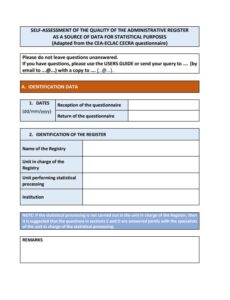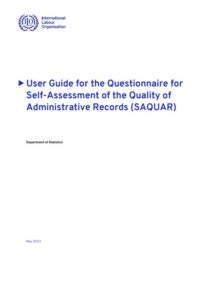Table of Contents
Related pages
Labour Market Information Systems (LMIS) are essential for effective employment policies and economic development. However, developing economies often face challenges such as limited resources, weak institutions, and insufficient data that hinder the full potential of these systems. Strengthening LMIS is critical for creating informed, impactful policies and improving development outcomes. Explore how the ILO’s expertise can help you build a robust LMIS tailored to your needs.
FAQ
What is a Labour Market Information System (LMIS)?
A labour market information system is a network of institutions, persons and information that have mutually recognized roles, agreements and functions with respect to the production, storage, dissemination and use of labour market related information and results in order to maximise the potential for relevant and applicable policy and programme formulation and implementation.
What is the purpose?
The main purpose of LMIS is the production of information and analysis for policy makers and other labour market stakeholders. For example, the functions of the European Employment Observatory are stated as follows: “The European Employment Observatory contributes to the development of the European Employment Strategy through the provision of information, comparative research and evaluation on employment policies and labour market trends.” It is important to establish institutional arrangements in order to make the information and analysis widely available, and to provide opportunities for labour market stakeholders to influence the agenda of the LMIS.
The LMIS can also be directly involved in monitoring and reporting on employment and labour policies. Both at the international and national levels, the institutional role of the LMIS can be broadened to include the exchange of information or coordination of the LMIS activities of labour market stakeholders, which include statistical agencies, research agencies and agencies involved in policy formulation and implementation, including and workers’ and employers’ organizations. This function may range from the dissemination of information on concepts, definitions and standards, to the allocation of resources regarding data collection or specific analytical activities.
What are the main functions?
Three main functions of labour market information systems include:
(1) Facilitating labour market analysis;
(2) Providing the basis for monitoring and reporting on employment and labour policies; and
(3) Serving as a mechanism to exchange information or coordinate different actors and institutions that produce and utilize labour market information and analysis.
What are the main components?
Labour market information systems consist of four main components:
(1) Collection and compilation of data and information;
(2) Repository of information;
(3) Analytical capacity and tools; and
(4) Institutional arrangements and networks.
Regarding the first component, and given that LMIS should provide analyses of labour markets in their economic context, collection or compilation of data consists not only of data on labour markets, but also on the broader economy. For example, data on trade flows and remittances are indispensable for an analysis of the labour market effects on economic crises.
Which type of sources are used?
Effective LMIS draw on all major data sources. Each source has advantages and limitations in terms of the cost, quality and type of information gained.
Labour force surveys can be designed to cover the entire population of a country, all sectors of the economy and all categories of workers, including own-account workers, contributing family workers and persons engaged in casual work. For this reason, household-based labour force surveys offer a unique advantage to obtain information on the labour market of a country and its structure. Other sources, such as population censuses, multi-purpose household surveys, establishment surveys, or administrative records (e.g., employment service records), differ in scope, coverage, units of measurement or methods of data collection.
Meanwhile, establishment surveys typically have poor coverage of very small or unregistered businesses but are a more reliable source on wages and earnings. Similarly, administrative records provide a low-cost source of labour market information, but this information is limited by the purpose of the records, which may be different from that of an analyst or policy maker.
Which indicators are included?
At a minimum, LMIS track a set of indicators, which constitute the basis for the development of more advanced systems. A widely-used set of indicators are the Decent Work Indicators (DWI). DWI cover the four dimensions of the ILO’s Decent Work Agenda, plus indicators of the economic and social context.
What we offer
The ILO provides technical assistance to constituents willing to implement an LMIS in order to:
- Improve and modernize the collection, processing, systematization and harmonization of information on labour, from different internal and external sources. Standardize statistical information on key market indicators to facilitate the reporting and management of labour market statistics in the country.
- Provide labour market information that is relevant, accurate and timely at the highest level to decision makers.
- Establish a suitable governance structure to make the System operate in an efficient and sustainable way with the participation of all the stakeholders in the production and use of LMI.
- Identify the sources of information for the Labour Market Indicators, collect reference metadata and harmonize the definitions of the indicators and classifications used in all of them.
- Build capacities in the technical personnel, in their different profiles, in the administration and use of the tools to implement the LMIS, including training in data modelling and SDMX.
- Train analysts and decision makers in the interpretation of labour market indicators.
- Make the LMIS.Stat platform available to the public.
Learn more

Questionnaire for Self-Assessment of the Quality of Administrative Records (SAQUAR)
This questionnaire, which is an adaptation of the Questionnaire for Evaluating the Quality of Administrative Records (CECRA, for its initials in Spanish) recommended by the Working Group on Administrative Records in the framework of the Statistical Conference of the Americas and coordinated by ECLAC, is a tool to assess the quality of administrative records for their potential use for labour statistics purposes.

User Guide for the Questionnaire for Self-Assessment of the Quality of Administrative Records (SAQUAR)
This user guide provides tips and clarifications for the completion of the Self-Assessment of the Quality of Administrative Records (SAQUAR) form, an adaptation of the Questionnaire for Evaluating the Quality of Administrative Records (CECRA, for its initials in Spanish) recommended by the Working Group on Administrative Records in the framework of the Statistical Conference of the Americas and coordinated by ECLAC.

LMIS Brief Description and ILO Toolkit
This document provides a comprehensive overview of the LMIS, delving deep into its functionality, components, and the implementation framework developed by the Office for its development at a national or regional level.
Implementation roadmap
In implementing an LMIS, four tracks are followed mostly in parallel:
In implementing an LMIS, four tracks are followed mostly in parallel:
Administrative Track: Initiated by the government’s request for ILO assistance, this track involves signing a MoU and preparing a project document. After the “Governance Workshop”, the manual describing the governance structure is published.
Statistical Track: After the MoU signature, an assessment of data availability and the institutional situation is carried out, aiming to align objectives among stakeholders. It involves initial meetings iwth the IT area in charge of hosting the .Stat Suite application and a “Data Production Workshop” (4-5 days) to define indicators and methods. Culminates in the LMIS Master Plan, developed by the leading agency and stakeholders, defining indicators and criteria.
Data Modeling Track: Begins post-Data Production workshop, involving data flow compilation, SDMX, and Data Modeling workshop.
- Concurrently, the Information Technology Track installs and configures the .Stat Suite platform. All tracks should ideally conclude simultaneously to facilitate the final “Data Preparation and ETL” workshop. Optional activities include Administrative Registries assessment and Interpreting Labour Market Indicators workshop.

Note: The actual length of each activity is defined during the assessment mission.
Project principles
Throughout the project, we adhere to the following key guiding principles:
- This is YOUR project, not ILO’s.
- ILO’s role is to assist in the implementation, at your own pace.
- LMIS is not an information technology project.
- Participation of the key data stakeholders in teh governance of the LMIS is a key to success.
- No single data source fulfill data requirements. LMIS must include data from all available sources.
- It is important to upload the stock of indicators, but more important is to ensure their sustained flow.
- Outputs’ quality fully depends on inputs’ quality.
- SMDX is an enabler for data harmonization, and data harmonization is essential for the LMIS.
We adhere to eight key guiding principles:
Stakeholder Engagement: Active involvement of all stakeholders ensures alignment with needs and objectives throughout the project lifecycle. This is YOUR project, not ILO’s.
Governance Framework: Establishing a robust governance structure ensures effective decision-making and accountability. ILO’s role is to assist in the implementation, at your own pace.
Data Quality Assurance: Emphasizing data accuracy and reliability guarantees the credibility and usability of the LMIS outputs. Outputs’ quality fully depends on inputs’ quality.
Standardization and Harmonization: Adopting standardized methodologies and harmonized criteria ensures consistency and comparability across data sources. SDMX is an enabler for data harmonization, and data harmonization is essential for the LMIS.
Capacity Building: Investing in capacity building at all levels enhances the ability to manage, analyze, and utilize labor market information effectively. Stakeholders should take note that no single data source fulfills data requirements. LMIS must include data from all available sources, some of which may not be fully developed and/or accessible to the public.
Sustainability: Designing the LMIS with long-term sustainability in mind ensures continued relevance and utility beyond the project duration. While it is important to upload the stock of indicators, it is even more important is to ensure their sustained flow.
Accessibility and Transparency: Promoting accessibility and transparency of data and processes fosters trust among stakeholders and maximizes the LMIS’s impact.
Adaptability and Innovation: Recognizing that LMIS is not solely an IT project encourages openness to innovative approaches beyond technology-driven solutions. It emphasizes the need for adaptability to diverse challenges and the incorporation of innovative methodologies beyond IT infrastructure.
.Stat highlights
High quality product: .Stat is one of the most advanced statistical information systems’ platform currently used in the official statistics community.
Affordable investment: Under the “umbrella” of ILO’s membership to the SIS-CC, a country implementing a LMIS can use the product and receive first level support and free upgrades. The only investment required to the country are the expenses associated to the deployment of the platform and training on .Stat administration and data/metadata management.
Community values: The SIS-CC promotes a series of values that are aligned with ILO principles, like partnership (collaboration rather than a vendor/client relationship), transparency (information openly and transparently shared among members), commitment (to respecting the coordinated work plans put in place), industrialisation (outputs developed according to best practices in application lifecycle management), and standards (foster and promote internationally-defined standards, such as SDMX, GSBPM, GSIM, and CSPA).
Sustainability: The collaborative approach for development, and the number of institutions using the software minimize the risk of support or further development being interrupted, an inconvenient situation that unfortunately is quite common when contracting external developers.




